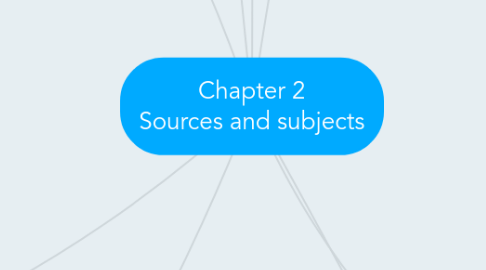
1. 2.8 Wrap-up interview
1.1. 2.8.1 Interview with Prof. Robert Kolb
1.2. 2.8.2 Sources of IHL
1.2.1. Prof. Kolb - Sources of IHL
1.3. 2.8.3 IHL subjects
1.3.1. Prof. Kolb - IHL subjects
1.4. 2.8.4 Working with the ICRC and for the Swiss army
1.4.1. Prof. Kolb - Working with the ICRC and for the Swiss army
2. 2.7 Armed Groups
2.1. 2.7.1 Introduction
2.2. 2.7.2 Binding armed groups
2.2.1. Two schools of thought on the obligations of armed groups
2.2.2. Discussion: "Which school of thoughts do you prefer, and why?"
2.3. 2.7.3 The weaknesses of the two main schools of thought
2.3.1. Weekness of two main schools of thought
2.3.2. Excerpt ICRC 2008 Report
2.3.2.1. Full report
2.3.3. MCQ (1 pt)
2.4. 2.7.4 Commitments by armed groups
2.4.1. Explanation
2.4.1.1. common Art. 3 to the four Geneva Conventions
2.4.1.2. Geneva Call
2.4.1.3. Aegean sea continental shelf case
2.4.1.4. Qatar v. Bahrain case
2.4.2. Excerpts of the judgement rendered by the Special Tribunal of Sierra Leone
2.4.2.1. Full judgement
2.4.3. MCQ (1 pt)
2.5. 2.7.5 Armed groups and national wars of liberation
2.5.1. A specific type of armed group: national liberation movements
2.5.2. T/F (1 pt)
3. 2.6 International Organizations
3.1. 2.6.1 Introduction
3.1.1. Interpretation of the Agreement of 25 March 1951 between the WHO and Egypt (1980)
3.2. 2.6.2 International organizations versus member states
3.2.1. Who is intervening: the organization or the member states?
3.2.2. Explanation
3.2.3. Text
3.2.4. MCQ (1 pt)
3.3. 2.6.3 Binding international organizations
3.3.1. Binding nature of IHL upon international organizations
3.3.2. Explanation
3.3.3. Excerpt of the Agreement on the status of the UNAMIR
3.3.4. MCQ (1 pt)
4. 2.5 States as the primary subjects of IHL
4.1. 2.5.1 States as the primary subjects of international law
5. 2.4 Is there a hierarchy between these sources?
5.1. 2.4.1 Introduction
5.2. 2.4.2 Defining jus cogens and obligations erga omnes
5.2.1. The notion of jus cogens and its legal implications
5.2.2. The notion of erga omnes and its legal implications
5.2.3. T/F (1 pt)
5.3. 2.4.3 Jus cogens rules of IHL
5.3.1. Explanation
5.3.1.1. ICJ Advisory Opinion on the Legality of the threat or Use of Nuclear Weapons
5.3.1.2. Kupreskic case
5.3.1.3. Responsibility of States for Internationally Wrongful Acts
5.3.1.4. Commentaries
5.3.2. T/F (1 pt)
5.4. 2.4.4 Erga omnes obligations of IHL
5.4.1. Introduction
5.4.1.1. Advisory Opinion on the Legal Consequences of the Construction of a Wall in the Occupied Palestinian Territory
5.4.1.2. Article 1
5.4.2. Excerpt of the 2016 ICRC Commentary of Art. 1 of GC 1
5.4.2.1. Commentary Article 1
5.4.3. T/F (1 pt)
6. 2.3 Custom as a supplementary source of IHL
6.1. 2.3.1 Introduction
6.2. 2.3.2 The role played by custom in International Humanitarian Law
6.2.1. What is the role of customary international law in IHL?
6.2.2. Excerpt of the Tadic case
6.2.2.1. Full case
6.2.3. MCQ (1 pt)
6.3. 2.3.3 Identifying customary International Law
6.3.1. Who identifies customary IHL?
6.3.2. MCQ (1 pt)
6.4. 2.3.4 The practice of non-state actors
6.4.1. Customary IHL from the practice of non-state actors
6.4.2. Excerpt of ICTY decision in the Tadic case
6.4.3. ICRC publications
6.4.3.1. Customary IHL. Vol I: Rules
6.4.3.2. HPCR Manual on International Law Applicable to Air and Missile Warfare
6.4.3.3. The Montreux Document
6.4.4. Excerpt of the judgement in the Tadic case
6.4.5. MCQ (1 pt)
6.5. 2.3.5 The elusiveness of state practice
6.5.1. Customary IHL from relevant state practice
6.5.2. Excerpt of the 2nd report of the Special Rapporteur of the IL Commission on identification of customary IL
6.5.2.1. Full report
6.5.3. Excerpt of ICTY decision in the Tadic case
6.5.4. MCQ (1 pt)
6.6. 2.3.6 The making of customary IHL: Discussion
6.6.1. 2 excerpts: US governement vs ICRC
6.6.1.1. US government's response to the ICRC study customary IHL
6.6.1.2. ICRC
6.6.2. Discussion "Which methodology do you prefer?"
6.7. 2.3.7 The main customary rules of IHL
6.7.1. What is the current state of customary IHL today?
6.7.2. MCQ (1 pt)
7. 2.2 Treaties as the main IHL source
7.1. 2.2.1 Introduction
7.2. 2.2.2 A review of the main IHL treaties
7.2.1. Three main groups of IHL treaties
7.2.1.1. 1907 The Hague Convention
7.2.1.2. 1949 Geneva Conventions
7.2.1.3. 1997 Additional Protocols
7.2.2. Other specific conventions
7.2.2.1. 1954 The Hague (cultural objects)
7.2.2.2. 1980 Convention (weapons)
7.2.3. T/F (1 pt)
7.3. 2.2.3 Specific features of IHL treaties
7.3.1. Main specific features
7.3.2. ICTY judgment in the Kupreskic case (extract)
7.3.2.1. Kupreskic case
7.3.3. Non reciprocity
7.3.4. Explanation
7.3.5. Excerpt of "International Humanitarian Law" (Robert Kolb)
7.3.6. MCQ (1 pt)
7.3.7. Excerpt of the ICJ Advisory Opinion
7.3.7.1. Reservations to the Convention on the Prevention and Punishment of the Crime of Genocide (28 May 1951)
7.3.8. T/F (1 pt)
8. 2.1 Introduction
8.1. 2.1.1 Introduction
8.1.1. General overview of the chapter
